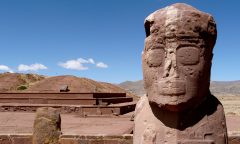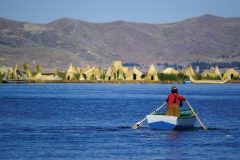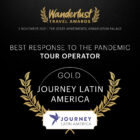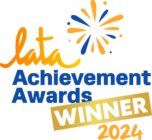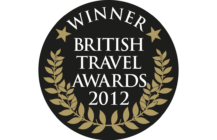Private Journeys
Signature Andes: Highlands of Peru, Bolivia and Chile
16 days from £5,490pp
(based on two people sharing & excluding flights)
Itinerary
 Map
Map
Day 1
Arrive in Lima and transfer to your hotel in Miraflores on the Pacific coast.
You will be met at the airport and escorted to your hotel in the cliff-side Pacific residential and commercial district of Miraflores. Lima is a vast, complex metropolis, with a history dating from the era of its wealth and importance to Imperial Spain, to its current status as a dynamic, growing city of trade, industry and tourism.

Stay at -
Antigua Miraflores
Day 2
Fly to Cusco, transfer to Urubamba.
Transfer to the airport and fly to Cusco in the Andes (1hr). Continue by road to the Sacred Valley of the Incas. Once the bread-basket of the empire, it was heavily populated in imperial times and scores of archaeological sites remain, where well-preserved ruins bear witness to the highly developed society that the Incas created. Overnight in Urubamba close to the river of the same name.

Stay at -
Las Casitas del Arco Iris
Day 3
Full day excursion to Pisaq ruins and the Sacred Valley.
A guided tour exploring the valley. The drive takes in several of the villages and temple fortresses that pepper the valley. You visit Pisaq village, its terraces and fort high above. The engineering and preservation are unrivalled. From the flat valley floor the sculpted hillside rises up like a green staircase to the heavens.
Continue along this picturesque, patchwork valley to the temple of Ollantaytambo. The snow-capped Andean cordillera forms a stunning backdrop. Ollantaytambo, sitting strategically at the gateway to the Amazon basin, was never captured by the Spanish conquistadores, but the inhabitants decided that the settlement was too vulnerable and would eventually fail, and so they abandoned it. The fortress, the colonial grid plan and the Inca foundations are still intact and there are wonderful views down over the sloping hillsides and into the fertile valley. Overnight in Urubamba.

Stay at -
Las Casitas del Arco Iris
Day 4
By road to Ollantaytambo then train to Machu Picchu, guided tour of the ruins.
Transfer to Ollantaytambo station by road and travel for 90 minutes by train to the ruins of Machu Picchu. As the Urubamba river enters its narrow gorge between thickly-forested granite hills, there is room only for a single track, which hugs the right bank and passes through hamlets that are no more than a collection of shacks beside the railway. Close to the foot of the mountain, on a saddle of which the citadel was built, is the bustling village of Machu Picchu, dedicated to serving the many visitors with artisan markets, bars and restaurants.
The majestic ruined city, reclaimed from tropical cloud forest, is reached by minibus up a sinuous road, or on foot up a near vertical rocky path. The American explorer Hiram Bingham discovered it in 1911, by which time it was completely buried beneath jungle vegetation. It is the ruins’ location on a ridge spur amid forested peaks and above a roaring river canyon, that most ignites the imagination.
You will have a guided tour of the ruins along one of the designated circuits designed to limit the impact of tourism on the citadel.

Stay at -
Casa Andina Standard Machu Picchu
Day 5
By rail and road back to Cusco.
Return to Cusco by rail and road. The name Cusco derives from the Quechua indian word for navel, indicating its location at the centre of the Inca Empire, which reached its zenith at the same time as England was fighting the Wars of the Roses. Today its many impressive original Inca walls display extraordinary craftsmanship, while the bustling squares are dotted with ornate baroque colonial churches. It’s a vivacious city, where shoeshine boys and postcard sellers jostle for your attention in cobbled streets lined with handicraft shops and cafés. In the evening, the town centre fills with people flocking to the many restaurants, bars and cafés.

Stay at -
Antigua Casona San Blas
Day 6
Half day guided city tour and visit Sacsayhuamán ruins.
Today a fascinating tour of the city. You visit Q’oricancha, once the principal Inca Sun Temple, with extraordinarily intricate stonework, and then explore the colossal zigzag walls of Sacsayhuamán, brooding on a hillside above Cusco. In 1536 a desperate and defining three-day battle was fought between the Spaniards and the Incas around this fortress. The first conquistadores to see it were awestruck and centuries later it is still an extraordinary and imposing sight.
Cusco is a compact city, easy to explore on foot independently. After the tour, you are at leisure to discover the street markets, the many baroque churches and museums, and to wander the attractive narrow streets.

Stay at -
Antigua Casona San Blas
Day 7
By road to Puno on the shores of Lake Titicaca.
A 6-7hr road journey leads across the Andean highlands to the lively port and University town of Puno, 3,805m above sea level on the shores of cobalt Lake Titicaca. The scenery along the way is windswept and desolate and the vastness of the landscape yawns towards the distant horizon under a bright Andean sky. The occasional stop alongside a collection of small highland lakes may give you the chance to see flamingoes feeding in the mineral-rich waters.
The vast lake sits on the Peruvian- Bolivian border, and the fish-laden waters and surrounding fertile soil are the lifeblood of subsistence farming communities clustered in scores of adobe villages along the water’s edge. Legend has it that this mystical spot is the birthplace of Inca civilisation: the progeny of the Sun God sprung from its depths to found the empire in Cusco.

Stay at -
Hotel Intiqa
Day 8
Guided excursion to the Uros islands, Taquile and Luquina Chico.
A full-day guided experience on the lake. Depart early from Puno for the 15 minute drive to Chucuito. Take a boat trip to the tranquil island of Taquile with its stunning views of Lake Titicaca. Around 1,500 Quechua-speaking indians live in this remote community and many still wear the traditional hand-woven dress. The island, 7km long, has no roads or vehicles, its terraced hills dotted with pre-Inca ruins.
Continue by boat to the indigenous village of Luquina Chico on the Chucuito Peninsula. This community-based tourism initiative has strict controls over visitor access and a visit allows you a unique insight into local life.
Later, visit the floating Uros Islands, constructed and reconstructed from layers of tortora reeds by the Uros indians over several centuries. Today no pure Uros exist, but the islands are still home to several hundred inhabitants. Although the islanders now earn a living mainly from tourism, their unique way of life continues to be totally ‘interwoven’ with the tortora reeds – their boats, houses and the football pitch are made from this material.

Stay at -
Hotel Intiqa
Day 9
Cross Lake Titicaca to Bolivia via Sun Island. By road to La Paz, capital of Bolivia.
Set off along the lakeshore towards the Bolivian border. The still waters almost lap the road, and wader birds may be seen negotiating the reeds. Pause to admire the little church at Pomata and continue to Copacabana (3hrs), a pretty little town set between two hills on the shores of Lake Titicaca. Copacabana gave its name to the better known beach in Rio.
Embark your comfortable hydrofoil to cross a corner of the lake to Huatajata. You’ll visit the Andean Roots Eco-Village with its exhibits which depict the regions cultural past. Continue by bus through lovely mountain scenery to La Paz (1.5hrs). Set in a deep canyon, dominated by the snow-capped peak of Mount Illimani, La Paz (3,632m) is the highest capital in the world.

Stay at -
La Casona
Day 10
Half day guided city tour and trip to the Moon Valley.
The colonial core around Plaza Murillo retains much of its quirky Spanish charm. Beyond, there are cavernous indigenous markets with open air grill restaurants and narrow alleyways lined with museums, churches and craft shops. Pavement vendors in felt bowler hats and colourful shawls crouch below the skyscrapers in tree-lined modern avenues.
You’ll have a guided tour to visit the historical centre including the official buildings surrounding Plaza Murillo. Continue to a selection of small museums. Explore one of the capital’s more unusual markets, the Mercado de las Brujas (witches’ market) where you can find cures for everything from heartaches to headaches. Pass through several affluent neighbourhoods en route to Moon Valley – not a valley at all, but a fantastic landscape of gullies and spires formed from an ancient bed of eroded rock.

Stay at -
La Casona
Day 11
Fly to Uyuni.
Your adventure in the salt pan wilderness of southern Bolivia and Chile starts today. Transfer to the airport to take a flight south to Uyuni, crossing the altiplano.
If it is clear, from the window you should see the plains of the southern altiplano. This makes for an austere, uncompromising wilderness, where cut-glass lakes and untrodden, luminous salt pans – the Salar de Uyuni – reflect the vast dome of an icy sky. While its few wind-buffeted Aymara inhabitants scratch a meagre living from the dusty soil, visitors can enjoy extraordinary landscapes of unexpected variety and surreal beauty. Desolate, denuded peaks, eerie blood-red canyons, contorted rock faces, sunlit lagoons of gemstone clarity and a horizon-bending white sea of salt will reward your perseverance. Snow-tipped volcanic cones and steaming geysers serve to remind you of the turbulent geology that has formed this challenging landscape.

Stay at -
Luna Salada
Day 12
Drive to the Salar de Uyuni (salt flats); explore the salt flats in the Atacama desert by 4WD vehicle.
Visit the nearby ancient fort and petrified mummies. Reached by 4WD vehicle only and situated halfway up Volcano Tunupa, this important archaeological site has the added bonus of uninterrupted views of the largest and highest salt desert in the world. After lunch, you’ll be driven to Isla Pescado, a small volcanic ‘island’ smothered by giant cacti with great views over the dazzling salt flats. Continue to the remote and mountainous region of San Agustín and the lost city of the Valley of Rocks before finally arriving at Villa Mar. Here, your very basic accommodation is an unusual property built into the side of a cliff; the rock face forms the rear wall of some of the bedrooms.

Stay at -
Mallku Cueva
Day 13
Continue over the border to San Pedro de Atacama, Chile.
An early morning start takes you to the shores of the fiery red Laguna Colorada, a bird-filled dash of vivid colour relieving the tawny monochrome of the desert. Continue up to a giddying 5,000m and descend to reach the sulphurous Sol de Mañana geysers and the hot springs of Polques – in which you can dip if you wish – and survey perhaps the most captivatingly beautiful and other-worldly scenery of the trip.
The surreal landscape here is of tortured rock formations splashed with a rainbow of colour, defined by a rim of snow-dusted volcanoes. You will reach Laguna Verde, a stunning aquamarine lake at the foot of Licancabur Volcano before changing vehicle for the last part of the journey, into Chile, which takes you along a road descending into the oasis town of San Pedro de Atacama.

Day 14
At leisure, optional outdoor activities.
At leisure in San Pedro. On the skirts of the eastern cordillera, 2,450m above sea level, the village is an oasis in the driest desert of the world. Despite the influx of tourists it has retained its charm and easy-going character, with dirt streets and adobe houses. The eastern side of town has panoramic views of the high Andes some 75km distant. In the clear air, they look a lot closer.
This unassuming little resort is a centre for outdoor activities and excursions to local attractions such as the Tatio geysers, the Valle de la Luna (moon valley) and the ruins of a pre-inca fortresses.

Day 15
Transfer to Calama airport and fly to Santiago.
Transfer to Calama airport and fly (2hrs) to Santiago, Chile’s capital. The sprawling city has to its east the immense wall of rock of the Andes – snow-capped in winter. Transfer to your hotel in a modern part of town with some good restaurants and shopping opportunities.
If you have time, for a panoramic view of the city visit the Cerro Santa Lucía, a hilltop park, or take the funicular tram or cable car to the top of Cerro San Cristóbal. A mixture of chic, pleasant tree-lined residential areas and smart office towers surround a compact colonial centre.

Stay at -
Pullman el Bosque
Day 16
Transfer to the airport for your flight home.
Transfer to the airport for your flight home, or contact us for ideas on how to continue your adventure in another part of Chile, such as Easter Island, the Lake District, Patagonia, or beyond to one of South America’s other wonders.
Outline itinerary
Day 1
Arrive in Lima and transfer to your hotel in Miraflores on the Pacific coast.
Day 2
Fly to Cusco, transfer to Urubamba.
Day 3
Full day excursion to Pisaq ruins and the Sacred Valley.
Day 4
By road to Ollantaytambo then train to Machu Picchu, guided tour of the ruins.
Day 5
By rail and road back to Cusco.
Day 6
Half day guided city tour and visit Sacsayhuamán ruins.
Day 7
By road to Puno on the shores of Lake Titicaca.
Day 8
Guided excursion to the Uros islands, Taquile and Luquina Chico.
Day 9
Cross Lake Titicaca to Bolivia via Sun Island. By road to La Paz, capital of Bolivia.
Day 10
Half day guided city tour and trip to the Moon Valley.
Day 11
Fly to Uyuni.
Day 12
Drive to the Salar de Uyuni (salt flats); explore the salt flats in the Atacama desert by 4WD vehicle.
Day 13
Continue over the border to San Pedro de Atacama, Chile.
Day 14
At leisure, optional outdoor activities.
Day 15
Transfer to Calama airport and fly to Santiago.
Day 16
Transfer to the airport for your flight home.
Inspired by this trip
Our exciting range of articles on Latin America explore everything from iconic destinations and lesser-known cultural gems to delicious traditional recipes. You’ll also find exclusive travel tips, first-hand client reviews and the chance to get your personal questions answered by our travel experts.
Papagaio
Your edit for Latin American inspiration
Our exciting range of articles on Latin America explore everything from iconic destinations and lesser-known cultural gems to delicious traditional recipes. You’ll also find exclusive travel tips, first-hand client reviews and the chance to get your personal questions answered by our travel experts.
View Extraordinary Inspiration
